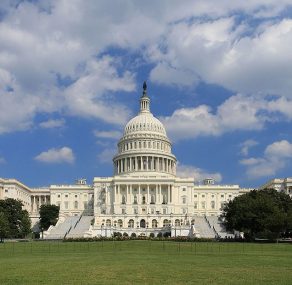OPM-GSA Merger Detailed in the White House Administration’s Proposed Legislation

The Office of Personnel Management, or OPM, may be done away with as it’s own independent service if the new proposal headed up by the Trump administration were to go through. In it, it has been advised that most OPM roles be assimilated by the General Services Administration or GSA.
It’s called the Administrative Services Merger Act of 2019, and the idea would be to move the many of the OPM services, including health and retirement, the HR Solutions program, and all it’s information technology, over to the GSA.
In a letter to the leadership of both the Senate and the House, the Office of Management and Budget acting director Russell Vought wrote that GSA will create a new personal service to house the human resources and employee lifecycle management shared service offerings.
It is Vought’s hope that with the new GSA, a more all-encompassing support network can be formed that would aide in helping everyone’s needs.
This also marks the first instance of the White House clearly defining what its role in the authority over the OPM it should have. As such, the Trump Administration is pushing for all the legal responsibilities of the OPM director to be placed under the umbrella of the administrator of the GSA. The director of the OPM then would become an “employee” of the GSA, heading up a national service under the GSA’s authority, that would be in charge of insurance, retirement, and health benefits of federal workers.
The proposal should simplify locating contracts and workers for all federal agencies, as well as lend additional support to them as needed.
The OMB would then take over the rulemaking and delegation aspects of the OPM director, the proposal states.
The President has the power to appoint the head of the new Office of Federal Workforce Policy, which itself would be nested in the OMB. This person would then be responsible for the coordination of regulations for the executive agencies, determining how efficient existing programs are, and helping the President as to, according to the proposal, “promote an efficient and effective federal workforce consistent with merit systems principles.”
The new federal workforce policy would be modeled after the Office of Federal Procurement Policy in its reorganization. $400,000 was the proposals request for the 2020 budget to cover expenses plus an additional three workers to help implement any of the new director’s changes.
The proposal itself paints a clearer picture of the new and shifting roles for the leadership of the GSA, OPM, and OMB. While still existing as a branch under the GSA, the OPM director would cease being the head of the Chief Human Capital Officers Council, which would then be the responsibility of the leader of the OMB, with the GSA administrator backing them up as co-chairman.
All of this, while continuing to widen the GSA administrator’s power. As the proposal states, the GSA leader would be in charge of “governmentwide efforts to build and sustain a federal workforce” with the GSA now responsible for strategic moves in this regard, which was something the OPM wasn’t equipped to do prior.
The pay for the OPM director and GSA administrator would also change in the proposed restructure, as well as making the GSA administrator an appointed position by the President, subject to confirmation by the Senate.
The new restructuring proposal is set to be reviewed by The House Oversight and Reform Government Operations Subcommittee. Rep. Gerry Connolly (Democrat, Virginia) is skeptical of the White House’s new plan, citing a lack of details. The hearing itself is, in fact, being called “Trump’s War on Merit-Based Civil Service.”
The White House needs legislative support in order for this proposal to pass. They would be the ones authorizing the power transfer, as well as funding the programs in the future. With the 2020 budget asking for 50 million dollars to put towards the OPM-GSA merge, they are trying to appeal to the rest of Congress, claiming the restructure could save up of 37 million dollars annually. This comes on the heels of a 70 million dollar deficit as the National Background Investigations Bureau is set to move their operations into the Pentagon later this fall.







